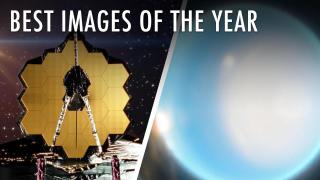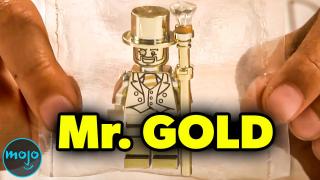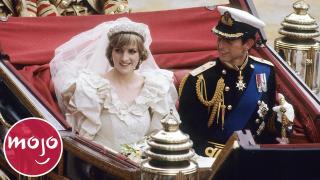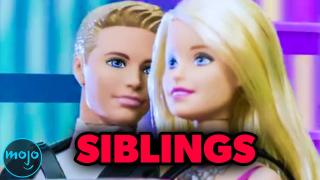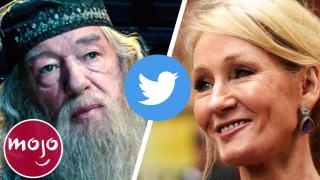Top 10 Controversial Children's Books
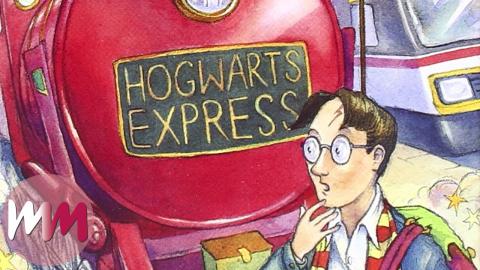
These are the most controversial children's books! For this list, we're looking at challenged and banned books that were written for either children or young adult audiences. We're also including books that typically appear on high school curriculums.
#10: “The Butter Battle Book” (1984)
Dr. Seuss
Top 10 Dark Stories Behind Children's Books
This is one Dr. Seuss book that won’t be getting the big screen treatment anytime soon. Author Theodor Seuss "Ted" Geisel is known for putting allegories and moralistic messages in his children’s picture books, but they don’t always have as direct a political message as this one. At the time of publication, deciding which side of your bread to butter was seen as content unsuitable for young readers. That’s because the story told in “The Butter Battle Book” paralleled the arms race taking place between the United States and Soviet Russia in the mid-1980s. Despite the passage of time, this continues to be controversial, as its message of people irrevocably divided still resonates with many.
#9: “The Witches” (1983)
Roald Dahl
Top 20 Books That Were Banned
If you read this book when you were a little kid, you very likely have memories of being straight up terrified by it. But the scariness factor is not the reason Roald Dahl’s young reader novel, “The Witches” was one of the most challenged books of the early 80s. And it also wasn’t the fact that it dealt with witchcraft! In fact, many libraries considered the story to be sexist, teaching children to vilify women. Other critics however have called it an "unlikely source of inspiration for feminists." This one is all about what you choose to get out of it!
#8: “James and the Giant Peach” (1961)
Roald Dahl
5 Best James Webb Images Of 2023 | Unveiled
By the time he published “The Witches,” Roald Dahl was actually no stranger to having his books stir up controversy. “James and the Giant Peach” was one of the author’s earlier works, and has a long laundry list of accusations against it. What caused this seemingly innocent story of a boy traveling in giant peach to be challenged by many at the time of publication and for decades afterwards? According to Book People, its supposed crimes includes “mysticism, sexual inferences, profanity, racism, tobacco and alcohol references and promoting disobedience, drugs and communism.” Maybe this one is worth a reread as an adult!
#7: “The Giver” (1993)
Lois Lowry
10 Most Controversial LEGO Sets
This dystopian novel was making its way onto many middle school curricula long before dystopian stories were cool. “The Giver” is a favorite of many young readers, and is often remembered as a first foray into this particular brand of sci-fi. There are many controversial aspects of the story though, which caused it to be one of the most banned children's books in the decade it was published. The top reason it was challenged? Parents deemed it “unsuitable for its age group.” Meaning the subject matter was too dark. The movie didn’t generate the same controversy – which maybe means it’s not the best adaptation.
#6: “Bridge to Terabithia” (1977)
Katherine Paterson
Could We Build A Bridge To The Moon?
The book you probably remember as one of the saddest reads of your childhood is also one of the most frequently challenged. As a matter of fact, the American Library Association lists “Bridge to Terabithia” at the 8th most challenged book of the 1990s. The biggest reason is due to its portrayal of the death of a child and the emotional aftermath. Not to say kids should be sheltered from this sort of content, but this ban at least makes a little more sense than some of the others on our list. Oh but it has also been challenged because a character frequently uses the lord’s name in vain.
#5: “Where the Wild Things Are” (1963)
Maurice Sendak
Top 5 Facts About Feral Children
According to the author of this classic children’s picture book, it took several years after publication for school and libraries to stop banning “Where the Wild Things Are.” It was challenged for the all too common reason of “promoting witchcraft,” though it’s simply about a little boy using his imagination to go to a fantastical world to soothe himself after having a temper tantrum. One of Sendak’s other works, “In the Night Kitchen,” is also a target of frequent censorship attempts. The reason for those attempts, though, is illustrations of full frontal child nudity.
#4: “Are You There God? It's Me, Margaret” (1970)
Judy Blume
Top 10 Most Controversial Royal Weddings
Judy Blume is known for writing some of the most seminal adolescent fiction out there, and perhaps her best known work is also one of her most frequently challenged. “Are You There God? It's Me, Margaret” was published in 1970 and deals with female sexuality, puberty, feminine hygiene, religion, and a series of other topics that many parents didn’t want their teenagers reading about. Similarly controversial was “Forever...”, also by Blume, which tackled the subject of teen sexuality head on and also touches on homosexuality, depression and suicide.
#3: “To Kill a Mockingbird” (1960)
Harper Lee
20 DARK Stories Behind Children's Toys
This classic piece of literature may not strictly be a “children’s” book, but because of its frequent inclusion in school reading lists, we’re including it today. At least one reason for challenging “To Kill a Mockingbird” – that it features racist language - is ironic, considering that racism, both overt and systemic, are prominently addressed in the story. In 2017 however, the book was actually banned in a school district in Mississippi because it “makes people uncomfortable,” which is problematic in ways we can’t even begin to address. It’s the kind of argument that might make even as wise a man as Atticus Finch scratch his head.
#2: “Adventures of Huckleberry Finn” (1884)
Mark Twain
Just like “To Kill a Mockingbird,” this much loved entry from the canon of American literature has been criticized for the very topic it aimed to dismantle. “Adventures of Huckleberry Finn” directly addresses racism, but in the many years since its release many have wondered if it does more harm than good. As is understandable for a work created so long ago, the ideas in it are somewhat dated, as is the language. The N word features prominently in the text, though at the time of publication that didn’t hold nearly the same significance as it does today. Whether this should continue to be taught in schools is still up for debate.
Before we unveil our top pick, here are a few honorable mentions.
“Sylvester and the Magic Pebble” (1969)
William Steig
“And Tango Makes Three” (2005)
Peter Parnell & Justin Richardson
“The Perks of Being a Wallflower” (1999)
Stephen Chbosky
#1: “Harry Potter” series (1997-2007)
J. K. Rowling
Top 10 Funniest Harry Potter Memes
One of the bestselling pieces of fiction of all time was also one of the most controversial. Any serious fan will question the validity of the complaints made against the “Harry Potter” series, because they know that “promoting witchcraft” isn’t exactly the purpose of the story. There are so many positive messages in the series, from the political to the moral, and it promotes an overall theme of love beyond all else. Despite this, many parents attempted to have the book banned and have at times even gone so far as to have copies of it burnt. Don’t worry though, because in the end all was well.




